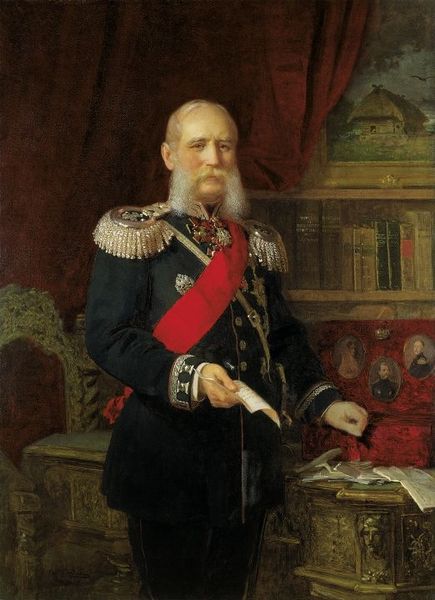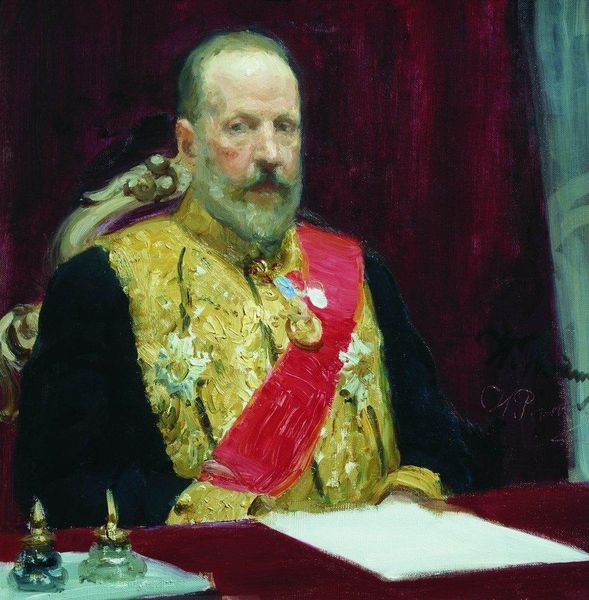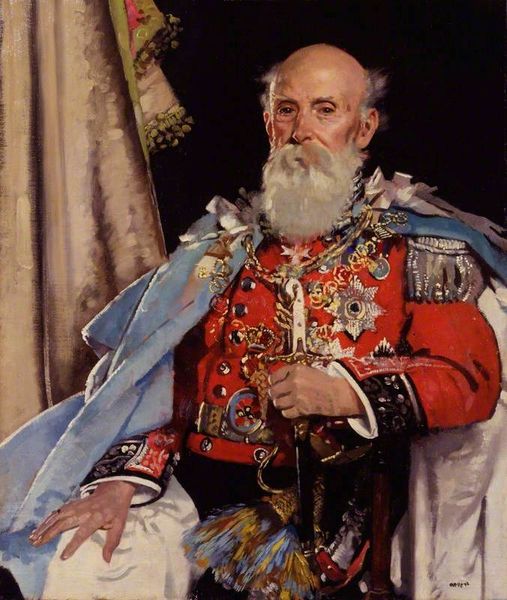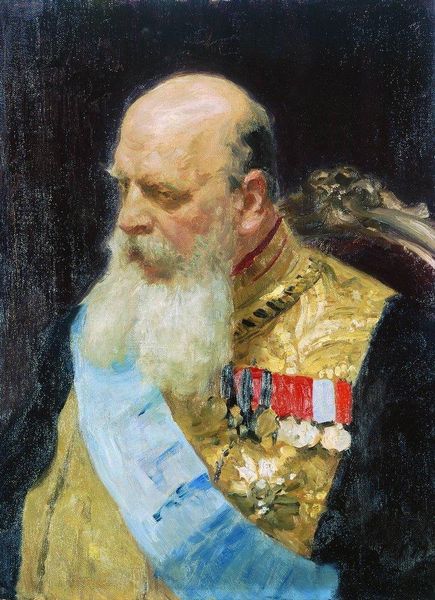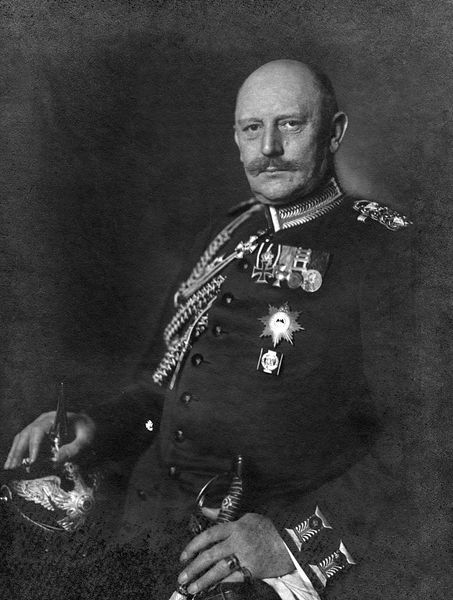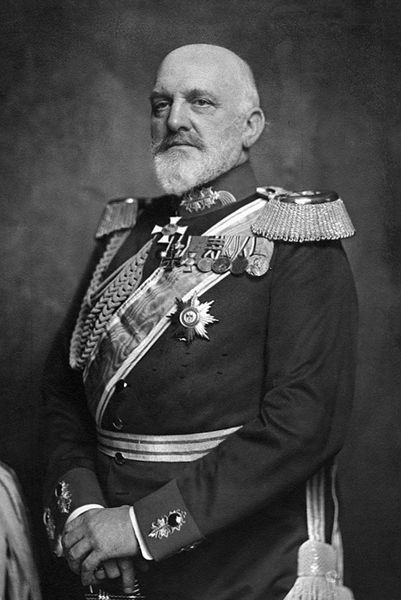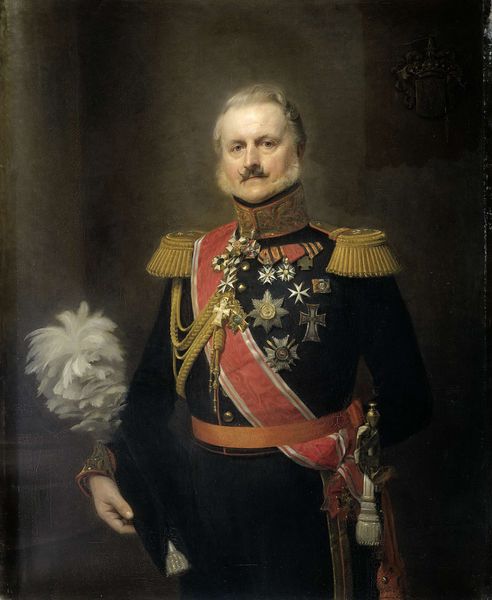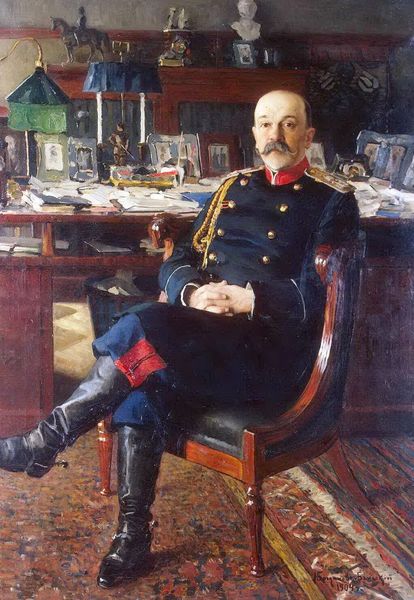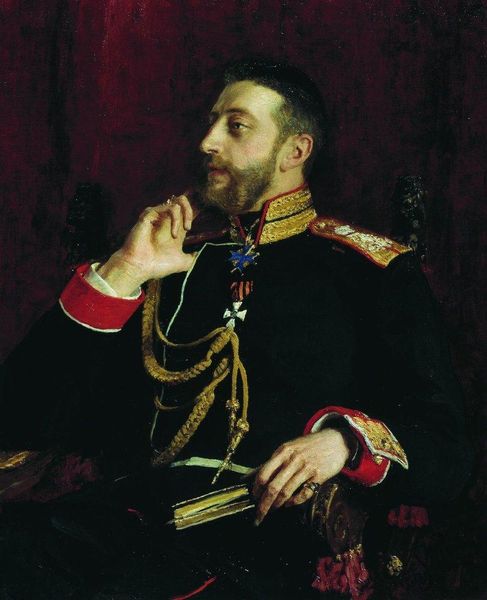
Portrait of the Military Engineer Andrey Delvig 1882
0:00
0:00
Copyright: Public domain
Editor: Here we have Ilya Repin's 1882 oil on canvas, "Portrait of the Military Engineer Andrey Delvig." It's very imposing, almost intimidating, with Delvig seated in what looks like a throne. What's your interpretation of this work? Curator: I see a study in power, but also a subtle critique of societal structures. The portrait is undeniably imposing, as you observed, but think about the historical context. This was a period of intense social change in Russia. Editor: What kind of social change? Curator: Consider the rising tide of revolutionary sentiment and the growing divide between the elite and the common people. How might Repin, known for his realist portrayals of ordinary Russians, be using the conventions of formal portraiture to comment on the privileges and perhaps the vulnerabilities of the ruling class? Notice how the ornate chair and the subject's decorated uniform, symbols of authority, seem to almost weigh him down. Editor: That’s a good point; the chair looks less like a throne and more like a gilded cage! Curator: Precisely! And note the detail in rendering Delvig's face – the subtle weariness in his eyes, the slight slump in his posture. Repin captures not just the outward display of power, but also the inner humanity, and maybe even the burden, of this high-ranking figure. What might the work say about the relationship between individual identity and social role? Editor: I hadn't considered the possible tensions within the sitter. That makes it much more complex. It really highlights the person within the powerful position. Curator: Exactly, and Repin often uses his art to question societal norms, prompting us to consider who benefits from, and who is constrained by, these rigid power structures. It's a work of art that invites us to examine our own assumptions about power, status and representation.
Comments
No comments
Be the first to comment and join the conversation on the ultimate creative platform.

